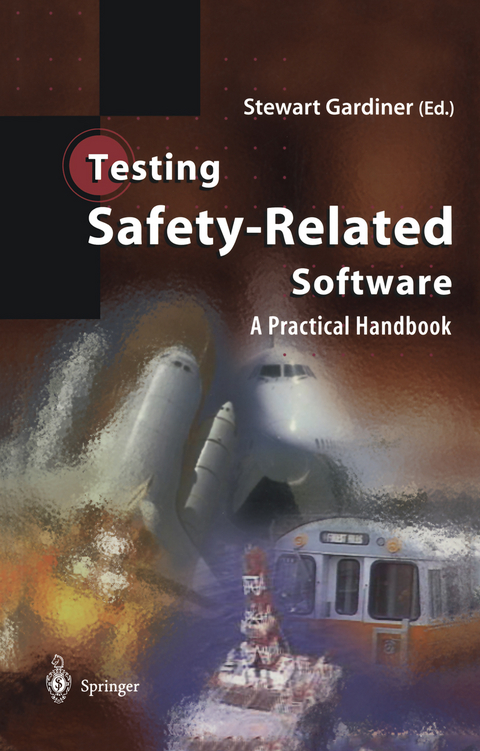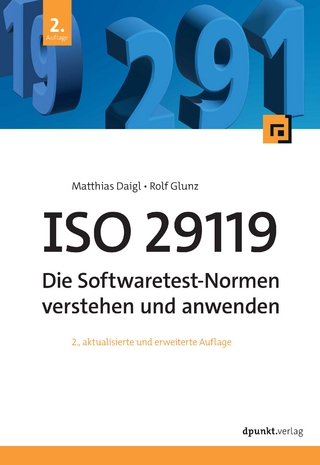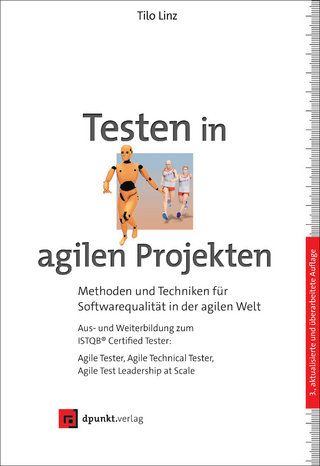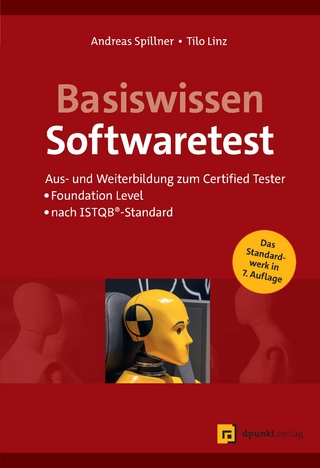
Testing Safety-Related Software
Springer London Ltd (Verlag)
978-1-85233-034-7 (ISBN)
1 Introduction.- 1.1 Context.- 1.2 Audience.- 1.3 Structure.- 1.4 Applicable Systems.- 1.5 Integrity Levels.- 1.6 Typical Architectures.- 1.7 The Safety Lifecycle and the Safety Case.- 1.8 Testing Issues across the Development Lifecycle.- 1.9 Tool Support.- 1.10 Current Industrial Practice.- 1.11 The Significance Placed upon Testing by Standards and Guidelines.- 1.12 Guidance.- 2 Testing and the Safety Case.- 2.1 Introduction.- 2.2 Safety and Risk Assessment.- 2.3 Hazard Analysis.- 2.4 The System Safety Case.- 2.5 Lifecycle Issues.- 2.6 Guidance.- 3 Designing for Testability.- 3.1 Introduction.- 3.2 Architectural Considerations.- 3.3 PES Interface Considerations.- 3.4 Implementation Options and Testing Attributes.- 3.5 Software Features.- 3.6 Guidance.- 4 Testing of Timing Aspects.- 4.1 Introduction.- 4.2 Correctness of Timing Requirements.- 4.3 Scheduling Issues.- 4.4 Scheduling Strategies.- 4.5 Calculating Worst Case Execution Times.- 4.6 Guidance.- 5 The Test Environment.- 5.1 Introduction.- 5.2 Test Activities Related to the Development of a Safety Case.- 5.3 A Generic Test Toolset.- 5.4 Safety and Quality Requirements for Test Tools.- 5.5 Statemate.- 5.6 Requirements and Traceability Management (RTM).- 5.7 AdaTEST.- 5.8 Integrated Tool Support.- 5.9 Tool Selection Criteria.- 5.10 Guidance.- 6 The Use of Simulators.- 6.1 Introduction.- 6.2 Types of Environment Simulators.- 6.3 Use of Software Environment Simulation in Testing Safety-Related Systems.- 6.4 Environment Simulation Accuracy and its Assessment Based on the Set Theory Model.- 6.5 Justification of Safety from Envirormient Simulation.- 6.6 Guidance.- 7 Test Adequacy.- 7.1 Introduction.- 7.2 The Notion of Test Adequacy.- 7.3 The Role of Test Data Adequacy Criteria.- 7.4 Approaches to Measurement of Software Test Adequacy.- 7.5 The Use of Test Data Adequacy.- 7.6 Guidance.- 8 Statistical Software Testing.- 8.1 Introduction.- 8.2 Statistical Software Testing and Related Work.- 8.3 Test Adequacy and Statistical Software Testing.- 8.4 Environment Simulations in Dynamic Software Testing.- 8.5 Performing Statistical Software Testing.- 8.6 The Notion of Confidence in Statistical Software Testing.- 8.7 Criticisms of Statistical Software Testing.- 8.8 The Future of Statistical Software Testing.- 8.9 Guidance.- 9 Empirical Quantifiable Measures of Testing.- 9.1 Introduction.- 9.2 Test Cost Assessment.- 9.3 Test Regime Assessment.- 9.4 Discussion of Test Regime Assessment Model.- 9.5 Evidence to Support the Test Regime Assessment Model.- 9.6 Guidance.- References.- Appendix A Summary of Advice from the Standards.
| Erscheint lt. Verlag | 30.10.1998 |
|---|---|
| Zusatzinfo | IX, 226 p. |
| Verlagsort | England |
| Sprache | englisch |
| Maße | 156 x 244 mm |
| Themenwelt | Informatik ► Software Entwicklung ► Qualität / Testen |
| Mathematik / Informatik ► Informatik ► Theorie / Studium | |
| ISBN-10 | 1-85233-034-1 / 1852330341 |
| ISBN-13 | 978-1-85233-034-7 / 9781852330347 |
| Zustand | Neuware |
| Haben Sie eine Frage zum Produkt? |
aus dem Bereich


